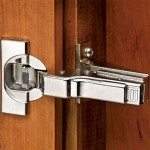How To Get Rid of Small Kitchen Flies
Small flies in the kitchen are a common and persistent nuisance for many homeowners. These tiny insects, often referred to as fruit flies, drain flies, or fungus gnats, thrive in environments where food sources are readily available. Understanding their attraction to the kitchen, identifying the specific type of fly, and implementing targeted eradication methods are crucial for effective and long-term control.
The proliferation of small kitchen flies is generally driven by a combination of factors including poor sanitation, readily available food waste, and suitable breeding grounds. Overripe fruits and vegetables, spills of sugary liquids, and decaying organic matter accumulate quickly in a kitchen environment, creating an ideal habitat for these pests. Understanding the specific vulnerabilities helps in forming an effective plan to get rid of them.
Identifying Common Types of Small Kitchen Flies
Accurate identification of the specific type of fly infesting the kitchen is the first step in implementing targeted control measures. While all small kitchen flies share some common characteristics, their preferred breeding sites and food sources vary, necessitating different approaches. The three most common types encountered are fruit flies, drain flies, and fungus gnats.
Fruit flies (Drosophila melanogaster), as the name suggests, are primarily attracted to ripe, rotting, or fermenting fruits and vegetables. They are typically small, about 1/8 inch in length, with red eyes and a tan or brownish body. Fruit flies reproduce rapidly, with females laying hundreds of eggs near sources of fermentation. Their life cycle, from egg to adult, can be completed in as little as a week under favorable conditions, leading to rapid population growth.
Drain flies (Psychodidae), also known as moth flies or sewer flies, are distinct from fruit flies in appearance. They are slightly larger, about 1/4 inch in length, and have a fuzzy, moth-like appearance due to their hairy wings and body. Drain flies breed in stagnant water and organic matter buildup in drains, sewers, and septic tanks. They are weak fliers and often seen resting on walls and ceilings near drains. The larvae feed on decaying organic matter, contributing to the breakdown of these substances, but also posing a nuisance to homeowners.
Fungus gnats (Sciaridae) are small, dark-colored flies that are often mistaken for fruit flies. However, they differ in their preference for moist soil and decaying plant matter. Fungus gnats are commonly found in indoor potted plants, where they feed on fungi and organic matter in the soil. The larvae can damage plant roots, leading to plant health problems. While they are generally harmless to humans, their presence can signify overwatering or poor drainage in potted plants.
Eliminating Breeding Grounds and Food Sources
The cornerstone of small kitchen fly control is eliminating their breeding grounds and food sources. Without readily available sustenance and suitable places to reproduce, the fly population will decline significantly. This involves meticulous cleaning, proper food storage, and addressing potential breeding sites.
Thorough and regular cleaning is essential. Countertops, sinks, and floors should be cleaned daily to remove any spills, crumbs, or food residue. Pay particular attention to areas where food preparation occurs, such as around cutting boards and blenders. Promptly wipe up any sugary liquids, such as juice or soda, as these are highly attractive to fruit flies. Empty trash cans frequently, and ensure they have tight-fitting lids to prevent flies from accessing the contents. Recycle bins should also be cleaned regularly to prevent the accumulation of food residue.
Proper food storage is critical for preventing infestations. Store fruits and vegetables in the refrigerator, especially when they are ripening or approaching spoilage. Overripe fruits and vegetables should be discarded immediately in a sealed outdoor trash can. Store pantry items, such as grains, flour, and sugar, in airtight containers to prevent access by flies and other pests. Regularly inspect pantry items for signs of infestation, such as small holes in packaging or the presence of larvae.
Addressing potential breeding sites is crucial for long-term control. Clean drains regularly using a brush and a drain cleaner specifically designed to remove organic matter buildup. Pour boiling water down the drain periodically to help flush out any remaining debris. Inspect and clean garbage disposals thoroughly to remove any food particles that may be trapped. Replace or repair leaky pipes and faucets to eliminate standing water, which can serve as a breeding ground for drain flies. For fungus gnats, avoid overwatering potted plants and ensure proper drainage. Allow the soil surface to dry out between waterings to discourage their reproduction. Consider replacing the top layer of soil with a fresh, sterile potting mix to remove existing larvae.
Implementing Targeted Control Methods
While eliminating breeding grounds and food sources will significantly reduce the fly population, targeted control methods may be necessary to quickly eliminate existing flies and prevent future infestations. These methods include traps, insecticides, and natural remedies, each with its own advantages and disadvantages.
Traps are an effective and relatively non-toxic method for capturing and killing small kitchen flies. Several types of traps are available, ranging from simple DIY solutions to commercially available products. A common DIY fruit fly trap involves placing a small amount of apple cider vinegar or red wine in a jar or bowl, covering the opening with plastic wrap, and poking small holes in the plastic. The flies are attracted to the scent of the vinegar or wine, enter the trap through the holes, and are unable to escape. Another simple trap involves using a paper cone placed in a jar containing a piece of ripe fruit. The flies enter the cone to reach the fruit but cannot fly back out. Commercial fly traps often use sticky paper or ultraviolet light to attract and trap flies. These traps are generally more effective than DIY solutions but may be more expensive.
Insecticides should be used cautiously and sparingly, as they can pose risks to human and pet health. If insecticides are necessary, choose products specifically labeled for use against small kitchen flies and follow the instructions carefully. Avoid spraying insecticides directly on food preparation surfaces or near food items. Space sprays can be used to kill adult flies in the air, while residual sprays can be applied to surfaces where flies are likely to land. Insect growth regulators (IGRs) can be used to disrupt the life cycle of flies, preventing larvae from developing into adults. IGRs are generally less toxic than conventional insecticides but may take longer to produce results.
Natural remedies offer a safer and more environmentally friendly alternative to insecticides. Several natural substances have been shown to be effective against small kitchen flies. Essential oils, such as peppermint, eucalyptus, and lavender, have insecticidal properties and can be used to repel flies. Dilute a few drops of essential oil in water and spray the mixture around the kitchen, paying particular attention to areas where flies are commonly seen. Diatomaceous earth (DE) is a natural powder made from fossilized algae. It is non-toxic to humans and pets but is deadly to insects. Sprinkle DE around potential breeding sites, such as drains and potted plants. The DE will dehydrate and kill the flies and their larvae. A mixture of dish soap and water can also be used to trap and kill flies. The soap reduces the surface tension of the water, making it difficult for the flies to escape. Place a bowl of soapy water near areas where flies are commonly seen. Flypaper is a traditional and effective method for trapping flies. Hang strips of flypaper in areas where flies are abundant. The flies will be attracted to the sticky surface and become trapped.

How To Get Rid Of Fruit Flies Pesky Little Things

How To Get Rid Of Fruit Flies Food Network

How To Safely Get Rid Of Fruit Flies At Home Simple Family Preparedness

Easy And Effective Ways To Get Rid Of Fruit Flies At Home The Times

How To Get Rid Of Fruit Flies

Want To Know How Get Rid Of Fruit Flies And Gnats In Your House Here Is A Simple Homemade Solutio Fly Trap

How To Get Rid Of Small Flies In Kitchen Designcafe

Expert Tips On How To Get Rid Of Gnats And Fruit Flies

How To Get Rid Of Fruit Flies Maid Zen
Fruit Flies Like To Live In Ripe And Bins Here S How Keep Them Out Of Your Kitchen Abc Everyday
Related Posts








